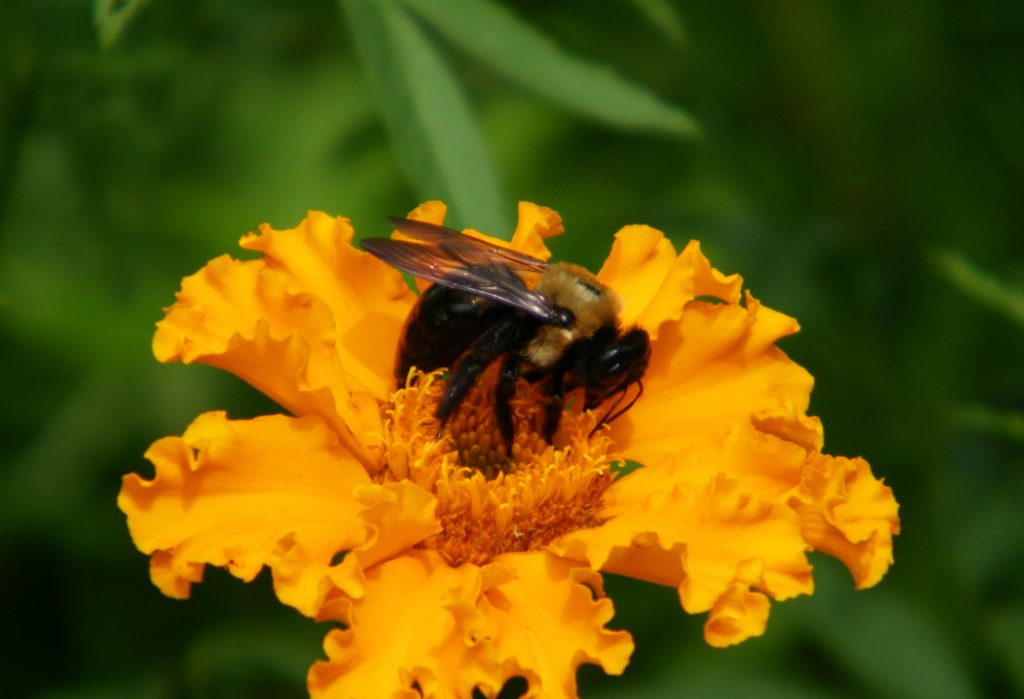Carpenter Bees Drilling Holes?
go.ncsu.edu/readext?669127
en Español / em Português
El inglés es el idioma de control de esta página. En la medida en que haya algún conflicto entre la traducción al inglés y la traducción, el inglés prevalece.
Al hacer clic en el enlace de traducción se activa un servicio de traducción gratuito para convertir la página al español. Al igual que con cualquier traducción por Internet, la conversión no es sensible al contexto y puede que no traduzca el texto en su significado original. NC State Extension no garantiza la exactitud del texto traducido. Por favor, tenga en cuenta que algunas aplicaciones y/o servicios pueden no funcionar como se espera cuando se traducen.
Português
Inglês é o idioma de controle desta página. Na medida que haja algum conflito entre o texto original em Inglês e a tradução, o Inglês prevalece.
Ao clicar no link de tradução, um serviço gratuito de tradução será ativado para converter a página para o Português. Como em qualquer tradução pela internet, a conversão não é sensivel ao contexto e pode não ocorrer a tradução para o significado orginal. O serviço de Extensão da Carolina do Norte (NC State Extension) não garante a exatidão do texto traduzido. Por favor, observe que algumas funções ou serviços podem não funcionar como esperado após a tradução.
English
English is the controlling language of this page. To the extent there is any conflict between the English text and the translation, English controls.
Clicking on the translation link activates a free translation service to convert the page to Spanish. As with any Internet translation, the conversion is not context-sensitive and may not translate the text to its original meaning. NC State Extension does not guarantee the accuracy of the translated text. Please note that some applications and/or services may not function as expected when translated.
Collapse ▲The warm weather has brought out the carpenter bees in force. The interesting thing you may have noticed is there are no piles of sawdust. Lots of big bees buzzing but no drilling.
This is because, just like honey bees, there are males and females. And, with the different sexes, there is a division of labor. This means the females do some tasks and the males do some tasks. The females create the nest (by chewing round holes in wood). Females lay the eggs in the nest. The females collect pollen from flowers and provision the nest with pollen for the developing young.

A female carpenter bee collects pollen from a flower. Carpenter bees are about the same size as a bumble bee. However, carpenter bees have a smooth black abdomen, and bumble bees have a fuzzy yellow, black striped abdomen.
The male carpenter bee’s contribution is providing genetic material. The female essentially does all the work.
The males do emerge a few days before the females. This gives these hard working guys time to scout a suitable site where they can catch the eye of a female. However, in reality there is not too much scouting since many carpenter bees do not fly far from where they emerged. The females emerge a few days after the males. Mating takes place and the male’s job is done, and the females get to work with their tasks of creating the next generation.
Most of the time, real damage to wood is minimal. However, over time, repeated drilling of new galleries can become significant. Additionally, there is always the chance of damage by woodpeckers as they dig out bee larvae from the galleries.
There are still no “silver bullets” for preventing carpenter bees from drilling other than using non-wood composite building materials. Favored targets for the bees are areas such as fascia boards, trim along with the undersides of porch rails and the spindles (balusters). Some people use carpenter bee traps which will catch some bees, but whether they “control” the bees is in the eye of the user.
Surface sprays typically have limited surface residual to be truly effective (or durable). We still recommend applying an insecticidal dust like Sevin to the holes and then caulking them about 24 hours later. Remember that when you’re spraying/dusting a carpenter bee gallery, keep a safe distance between your face and any possible backsplash. Be equally careful when spraying up over your head. The laws of gravity apply equally to pesticides, and the higher you spray, the more likely that some chemical may drift as well.




